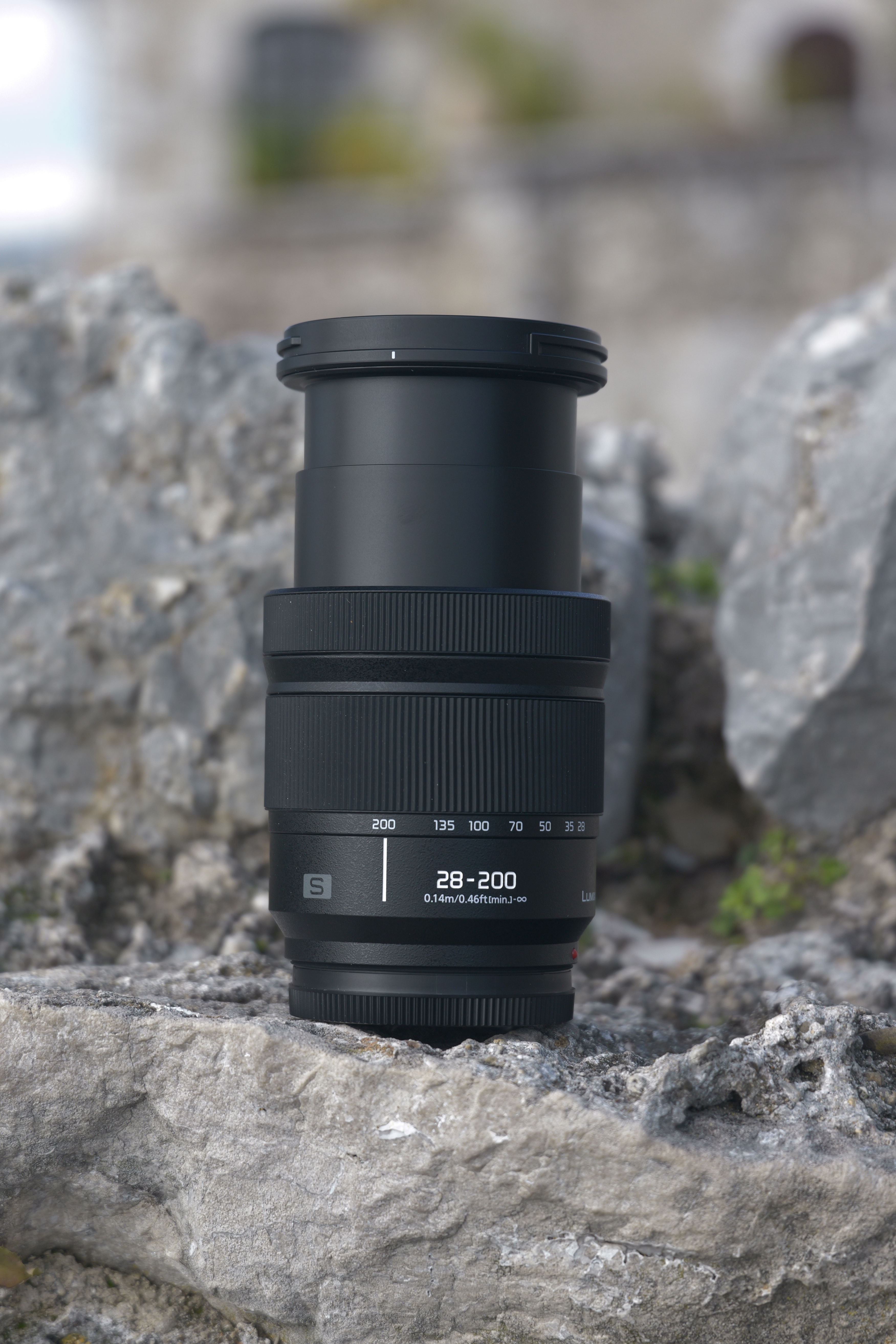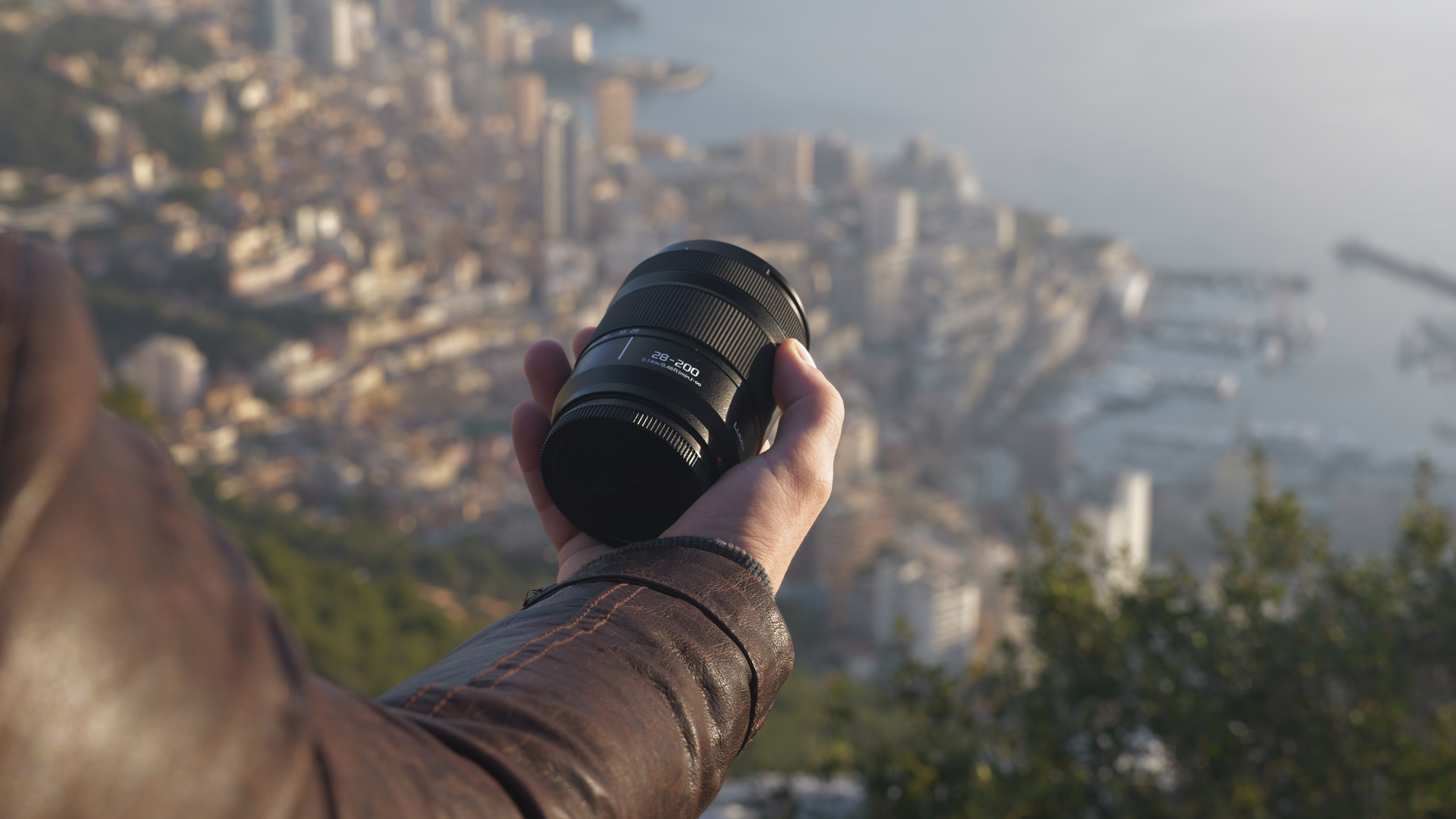Panasonic claims another 'world’s first' with its shrunk-down superzoom lens
Panasonic’s new Lumix S 28-200mm lens is the world’s smallest and lightest 7x zoom lens for full-frame cameras

Panasonic is at it again – hot off the heels of making the record-breaking-ly compact Lumix S 100mm Macro lens, Panasonic is shrinking down yet another lens to create the world’s smallest and lightest 7x zoom full frame lens – the Panasonic Lumix S 28-200mm f/4-7.1 Macro O.I.S.
The Lumix S 28-200mm lens weighs in at just 413g and has a total size of 77.3 x 93.4mm. Like Panasonic’s prime lens range, the 28-200mm also has the trick of matching the rough size and weight of the Lumix S 20-60mm making swapping the lenses in and out easier during video production. The lens also shares the same 67mm filter thread so filters are easier to swap out – not to mention cheaper to collect.
Interestingly, while Panasonic managed to make some big space savings in the Lumix S 100mm macro lens with its newly developed Dual Phase Linear Motor – Panasonic isn’t actually using this motor in the 28-200mm lens. Instead, Panasonic’s lens team is simply employing good old-fashioned engineering experience to get this lens down to a more diminutive form. Still, even without this new motor, Panasonic has claimed in their testing the 28-200mm lens will focus from near-to-far distances faster than competitor lenses from other brands.

In a further little lighthearted rivalry, Panasonic has pointed out that its Lumix S5II camera, plus the Lumix S 28-200mm lens, plus one of its Lumix S prime lenses – weighs less in total than just the Sony A7 IV and 24-240mm lens.
The new 28-200mm lens also has half-sized (0.5x) macro capabilities, with an impressive close focus distance of 14cm (5.5in) from the sensor, and just 3cm (1.18in) from the front of the lens. This is at the 28mm end of the lens though, which isn’t the ideal focal length for macro, but can make for an interesting perspective.
It also blows the Sony FE 24-240mm F3.5-6.3 OSS and Canon RF 24-240mm f/4-6.3 IS USM out of the water with their 50cm closest focus distance, although in all fairness, neither claims to be a macro lens.


Optically, the lens has 17 elements in 13 groups, and the lens has 9 aperture blades which should make for a more rounded bokeh than the 7 blades found in most rival lenses. The lens is also weather-sealed for braving the elements – a pretty essential feature as this will undoubtedly be a popular travel lens for Panasonic shooters.
Get the Digital Camera World Newsletter
The best camera deals, reviews, product advice, and unmissable photography news, direct to your inbox!
Superzoom lenses are often overlooked lenses despite being one of the most useful lenses you can have in a kit bag – and most photographers at some stage are likely to own one. There is a certain stigma around the lenses for being lower in quality to achieve their ambitious focal lengths, although this has been proven wrong time and time again, with lenses like the Tamron 28-200mm f2.8-5.6 Di III RXD or Canon RF 24-240mm f/4-6.3 IS USM we found very impressive in their category – and I am looking forward to fully exploring Panasonic’s latest.
The Panasonic Lumix S 28-200mm f/4-7.1 Macro O.I.S. will be available in April in the US and UK, from May in Australia, and will cost $899 / £899 / AU$1,599. The lens will come with a petal lens hood in the box.

For more check out our top picks for the best Panasonic camera and best L-mount lenses

Gareth is a photographer based in London, working as a freelance photographer and videographer for the past several years, having the privilege to shoot for some household names. With work focusing on fashion, portrait and lifestyle content creation, he has developed a range of skills covering everything from editorial shoots to social media videos. Outside of work, he has a personal passion for travel and nature photography, with a devotion to sustainability and environmental causes.
